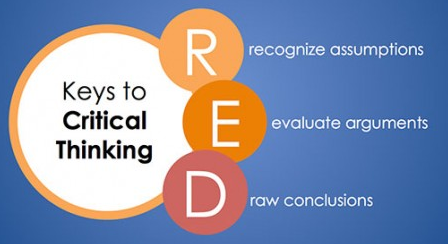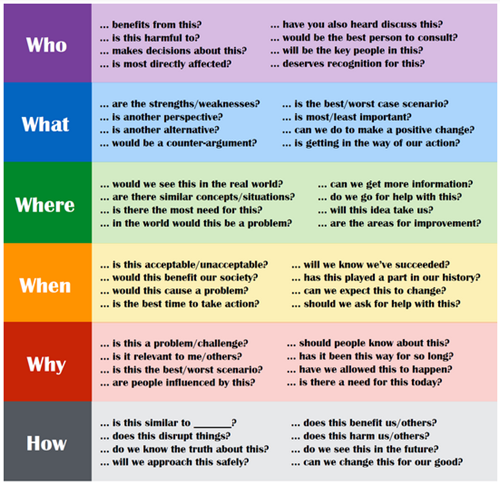
Take a few minutes for a quick, practical refresher on the art of critical thinking. It is for audit leaders and auditors alike. We look at why it is important, top tips and some practical tools chosen specifically for auditors.
Critical thinking is a core competency for auditors. It topped the list of most desirable traits for more than 53 percent of respondents to MIS Training Institute’s 2018 Internal Audit Priorities Report.
You go to conferences and maintain your technical skills.
But when did you last think about how you think?
Why is this important to me?
Critical thinking is about being thorough.
It is the essence of objective decision making and maintaining an independent mindset.
Critical thinking goes beyond the ‘what’ and looks at the ‘why.’
It is more than just why, it is 5 whys, the thought process behind root cause analysis.
At every stage of an audit, disciplined, critical thinking is an invaluable skill. It makes the difference between an audit that ticks the box and one that makes a lasting difference.
Thinking in a structured manner enables auditors to work in volatile, complex and uncertain environments, providing insight to support robust risk management activities.
In his book Trusted Advisor, Richard Chambers, CEO and President of IIA Global, positions critical thinking alongside technical skills as the two professional attributes of trusted auditors.
Critical thinkers use:
- reasoning and logic to evaluate information
- structure to assess alternatives
- intellectual curiosity to join the dots and make linkages
- healthy scepticism to remain grounded
- data to validate their ‘audit nose/gut feel/sniff test’
10 top tips
We have distilled lots of theory on this topic to come up with the tips relevant to internal auditors.
- Always remain open-minded. Be open to all possibilities.
- Find the time to think.
- Embrace data analytics and artificial intelligence.
- Brainstorm ideas. Be creative and innovative.
- Improve your memory to help link diverse points.
- Focus on what is known and unknown in any situation.
- Practice every day, exercise your brain.
- Be patient with yourself, skills take time to nurture.
- Seek feedback, learn from others too.
- Utilise training courses.
As audit leaders it is also important to:
- Incorporate critical thinking into audit methodology and practices
- Coach and mentor rather than provide answers
- Ask your auditors what they think and why
- Respect everyone’s opinion, especially junior members of the team
- Discuss the components of critical thinking in performance appraisals and feedback.
Critical thinking model
Auditors need to be agile of mind, to assimilate information, adapt in a meeting and deliberate findings.
The Pearson’s RED Critical Thinking model is easy to remember. The three elements also form the basis of a popular, credible psychometric test used in recruitment (Watson-Glaser).

The three stages of the model follow the natural thought process. A flexible process that is rapid during a conversation or more relaxed when compiling working papers.
Recognise Assumptions. This is where auditors gather information, listen to people and observe behaviours. It is about distinguishing between the facts and the opinion or emotion. The logical mind looks for information gaps. The curious mind considers different perspectives and looks at the situation from the perspective of different parties.
Evaluate Arguments. This is about accurate, structured and objective analysis of the facts. It is important to suspend judgement at this point to remain impartial.
Draw Conclusions. This final stage is where diverse and seemingly unrelated information is brought together, the joining of dots, to arrive at a conclusion, an opinion. Having made a decision, next steps or actions can be formed.
It is possible for auditors to be skilled in some but not all elements of critical thinking.
Think about your own strengths.
Which of these elements do you do well?
Where could you improve?
Do you think critically?
Critical thinking questions
The RED model outlines the fundamental skills required for critical thinking.
We now look in detail at some practical questions an internal auditor can add to their repertoire for day-to-day use.
All auditors know the value of open questions. Kipling’s six honest serving men are the focus of a critical thinking framework produced by Wabisabi Learning. A free pdf of this framework is available from their website.


* for society, substitute organisation, function, industry, sector, department as appropriate.
In summary
As auditors we work to standards and methodologies but that doesn’t mean everything is done by rote that would be boring. Auditors must think critically to add value to their organisations. It is essential to be able to provide insight in addition to assurance and be respected in an advisory role.
Additional reading and support
Transforming internal audit through critical thinking, KPMG
- Short course – Root cause analysis
This course provides comprehensive teaching and tools for mastering this technique
1 day, 7 CPE points
- Free webinar slides – Root cause analysis
We outline the concept and skills plus look at how to structure assignments
2hrs, 2 CPE points
